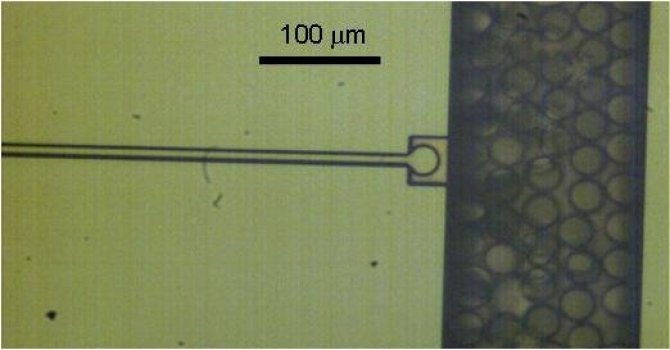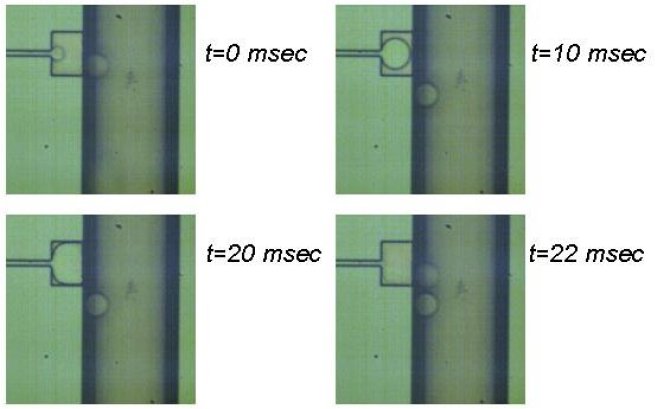Microdruppels

Emulsions are produced in various industries, such as food, cosmetics or pharmaceutical industries. Well known examples are margarine, mayonnaise, sun cream, paints and, more recently, drug delivery systems. For stable emulsions, it is important to have small and preferably mono-sized droplets.
A relatively new technique to produce such emulsions is microchannel (MC) emulsification (Figure 1). A droplet of the to-be-dispersed phase is pushed through a channel onto a relatively flat area (the so-called terrace) upon which the droplet can expand to a disk shaped entity. Upon further inflation, the disk reaches the edge of the terrace, where it can expand into the deeper well, in which spontaneous detachment of the droplet takes place.

Advantages of this technique are control of droplet size, low shear stresses, and low energy consumption. Because the process is not yet well understood, there is a lot of room for improvement and optimization. Therefore, the influence of e.g. channel geometry and interfacial tension are studied in detail within this research.
AimThe aim of the project is to gain a thorough understanding of the microchannel emulsification process. The ultimate goal is to derive design rules for microchannel emulsification systems.
Materials & Methods
Microchannels with various terrace dimensions are fabricated on silicon wafers by Micronit Microfluidics b.v. The droplet formation mechanisms are studied under a microscope connected to a high-speed camera. The to-be-dispersed phase used in the first experiments is hexadecane, and MilliQ pure water is the continuous phase. The only ‘function’ of the continuous flow during the spontaneous snap-off mechanism is to transport the formed droplets downstream; no shear force is needed.
First results
The project has just started, but the experiments gave already very promising results, Figure 2 shows a number of droplets of fairly uniform size. In Figure 3 four frames are shown, which illustrate the very high frequency of the process. The detachment is within 2 milliseconds.


Conclusion
The designed microchips are suitable to study the break-up of oil droplets during microchannel emulsification. Very high droplet formation frequencies can be reached.
Acknowledgement
This project is part of the larger Microdruppels project, in which we collaborate with Nanomi, Friesland Campina and Demcon amongst others.
Reference
- Interfacial Tension Driven Monodispersed Droplet Formation from Microfabricated Channel Array. Sugiura, S., Nakajima, M., Iwamoto, S., Seki,M. (2001) Langmuir 2001, 17, 5562-5566